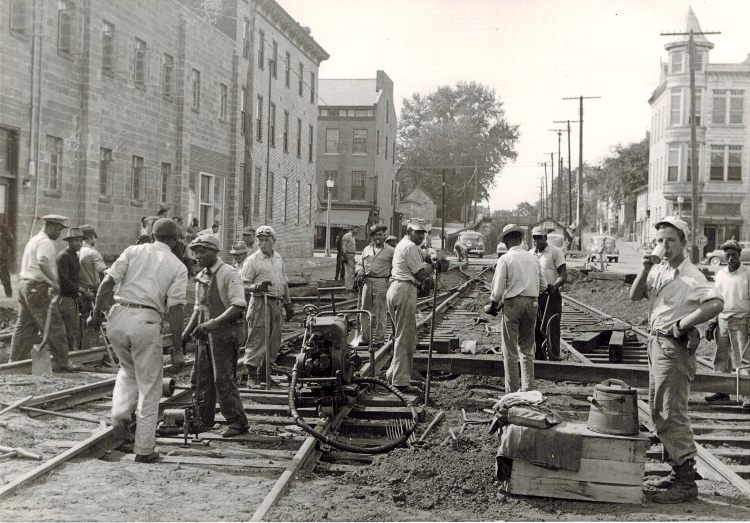This featured image is of the crew of Stancill’s Inc. of Havre de Grace, contracted to remove the old railroad track from ‘the CUT’ on St. Clair St. in Havre de Grace.
DID YOU KNOW?
April 1836: The first operational railroad ferry was the Havre de Grace/Perryville Ferry Service from the foot of (then) St. Clair St. in Havre de Grace to Perryville.
A train ferry is a ship (ferry) designed to carry railway vehicles. Typically, one level of the ship is fitted with railway tracks, and the vessel has a door at the front and/or rear to give access to the wharves. In the United States, train ferries are sometimes referred to as “car ferries”, as distinguished from “auto ferries” used to transport automobiles. The wharf (sometimes called a “slip”) has a ramp, and a linkspan or “apron”, balanced by weights, that connects the railway proper to the ship, allowing for tidal or seasonal changes in water level.
from WIKIPEDIA
While railway vehicles can be and are shipped on the decks or in the holds of ordinary ships, purpose-built train ferries can be quickly loaded and unloaded by roll-on/roll-off, especially as several vehicles can be loaded or unloaded at once. A train ferry that is a barge is called a car float or rail barge.
It could be possible that we were also the first ‘unofficial franchise’ as Rodger’s Tavern in Perryville and Rodger’s House in Havre de Grace were hotels and pubs for those waiting to cross the Susquehanna River!!! (‘casual historian’ musings)
To get to the ferry a single track railroad was built from west of the city to the River to carry passengers and freight. “The Cut,” as it was called, was the section of the railroad spur that ran west to east along St. Clair Street from 1836 beneath retaining walls and dropping below wooden bridges on Stokes Street, Washington Street, and Union Avenue.
from Historic Havre de Grace website
NOTE: From all who have shared information with our ‘casual historian,’ there was NO bridge over Washington Street, only Stokes St. and Union Ave.

A steam-powered ferry boat transported the rail cars (but not the locomotives) across the river to Perryville and back from 1837 until 1866. The first ferry used was the 453-ton “Susquehanna” under Captain William W. Virdin (1803-1871), with 1,200-person capacity, replaced in 1853 by the “Maryland.” The “Maryland” was the first steel ferry boat to transfer the complete train and was large enough to transport passengers also. After the first bridge was built across the Susquehanna River in 1866, the “Maryland” was no longer needed and eventually was sold to a company in New York where it continued to transport railroad cars across the East River until she caught fire and burned in 1888.
from Historic Havre de Grace website
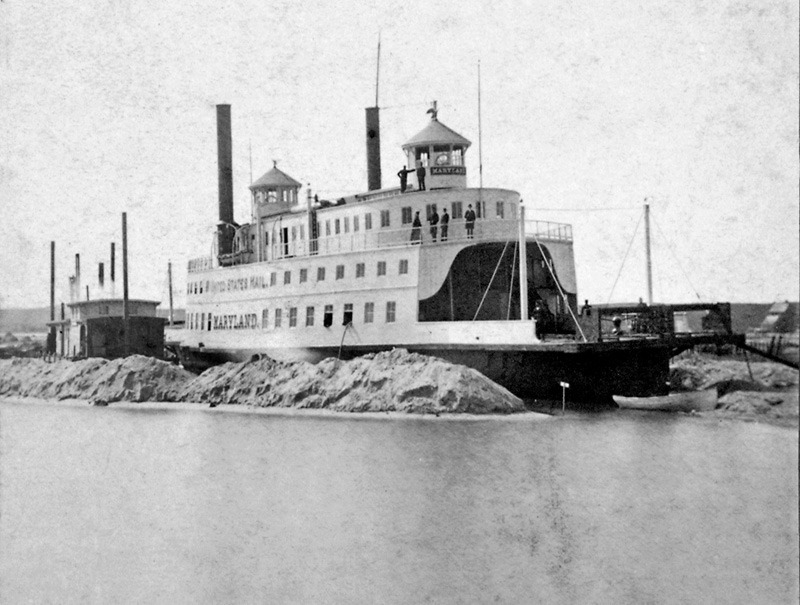
from MV Times
In mid-December 1875, the 234-foot transfer steamer Maryland appeared in Vineyard Haven Harbor, towed by the steam tug Cyclops. It was headed from Havre de Grace, Md. to Boston. It remained in our harbor for about three days, then continued its journey north.
from MV Times
It was a car ferry, to be sure, but not for automobiles. It was for train cars, and was said to be the first ferry ever built to have railroad tracks laid directly onto its deck. Built in 1852, it ferried trains for a decade across the Susquehanna River for the Philadelphia, Wilmington & Baltimore Railroad. Trains were rolled right on, and at the end of its short voyage across the river, rolled right off again onto the tracks on the other side. During the Civil War it was used briefly as a troop transport, but then resumed its river service until a bridge was finally built over the river in 1866.
The Demise of ‘the CUT’
Naturally, the new railroad bridge that opened in 1866 ended the need for ferrying railroad cars from Havre de Grace to Perryville.
But a different kind of ‘car’ accident pushed the powers-that-be to move to fill in ‘the CUT.’ According to a newspaper article, Mr. Pfaffenbach remembered, “One night, some family from out of town came across the Union Avenue bridge and made a turn in front of the firehouse and the car went down into the cut. Some of the occupants were killed, and the accident showed everyone that a very dangerous condition existed.”
… He didn’t remember the exact date but probably the late 1940s or early 1950s.
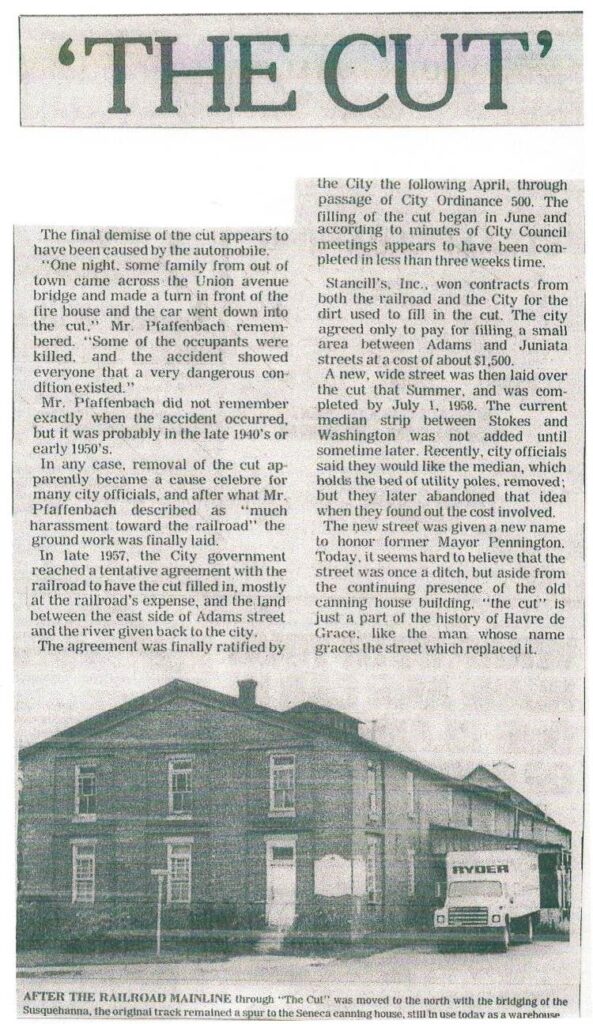


This is the corner of Union Ave and Pennington (firehouse on the right)
The Cut was filled in during 1958 (because the trains had stopped running) with dirt that came from the Hebditch property on the north side of US Route 40 at Lewis Lane. It took 2,700 truckloads by 20-ton dump trucks to fill in The Cut. Once The Cut was filled in, bridges were removed and the streets were leveled and paved.
from Historic Havre de Grace website
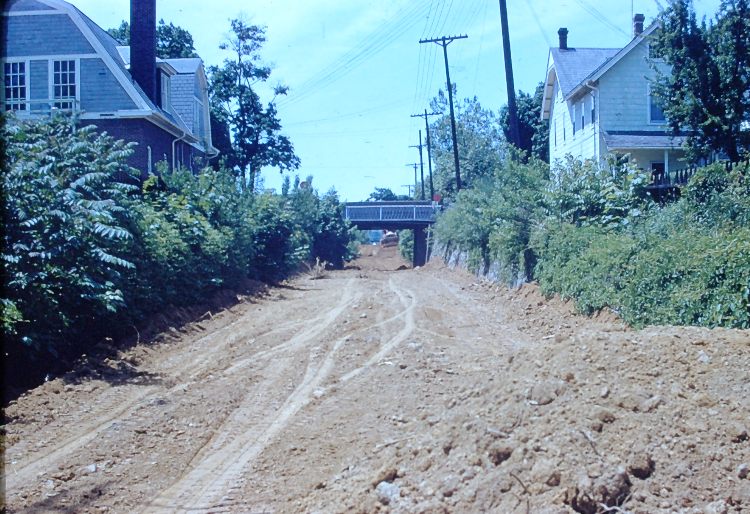

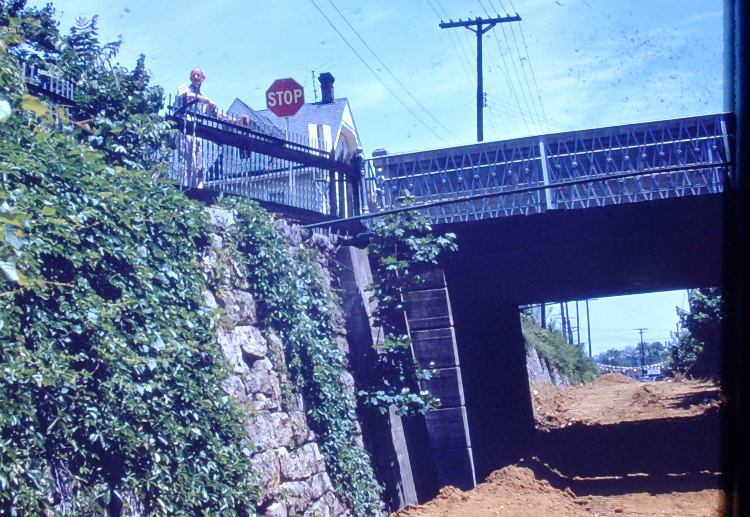



At one point, there were poles in the median of Pennington Avenue which was a sore point with the city.
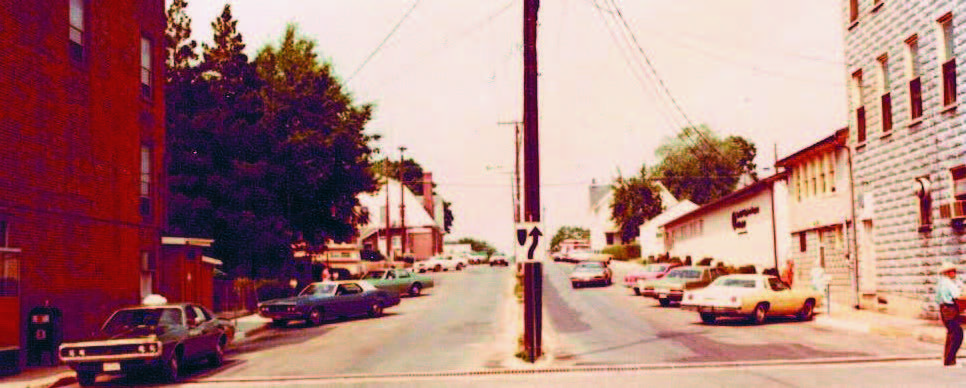
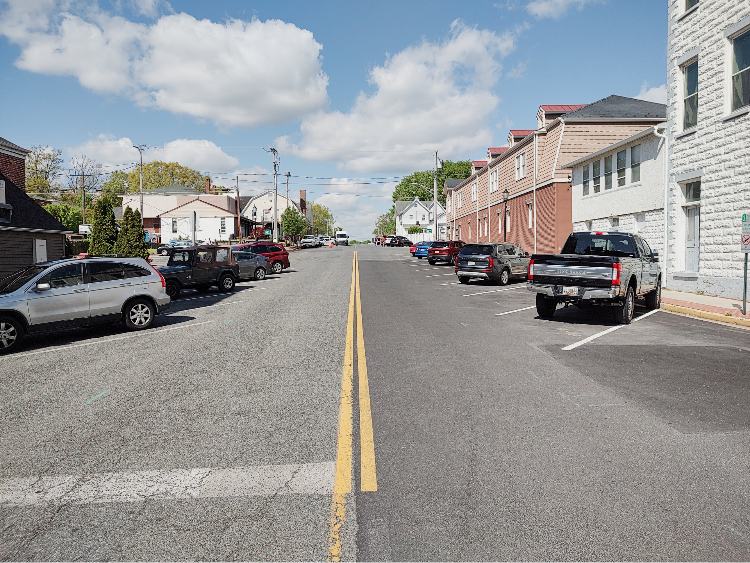

A special ‘thank you’ to Annie McLhinney and family for sharing slides, movies, and much more from their family collection. (Yes, you’ll be learning more about Annie’s amazing collection in a number of different episodes in the near future.)
Remember, don’t throw the Havre de Grace ‘stuff’ out when you’re cleaning out a home, settling an estate, or just ‘downsizing,’ without checking in with George. Don’t give him cause to cry!!!
Our ‘casual historian’ is always waiting for your stories and any memorabilia you may want to share.
Please SHARE these posts and SUBSCRIBE to his youtube channel.
